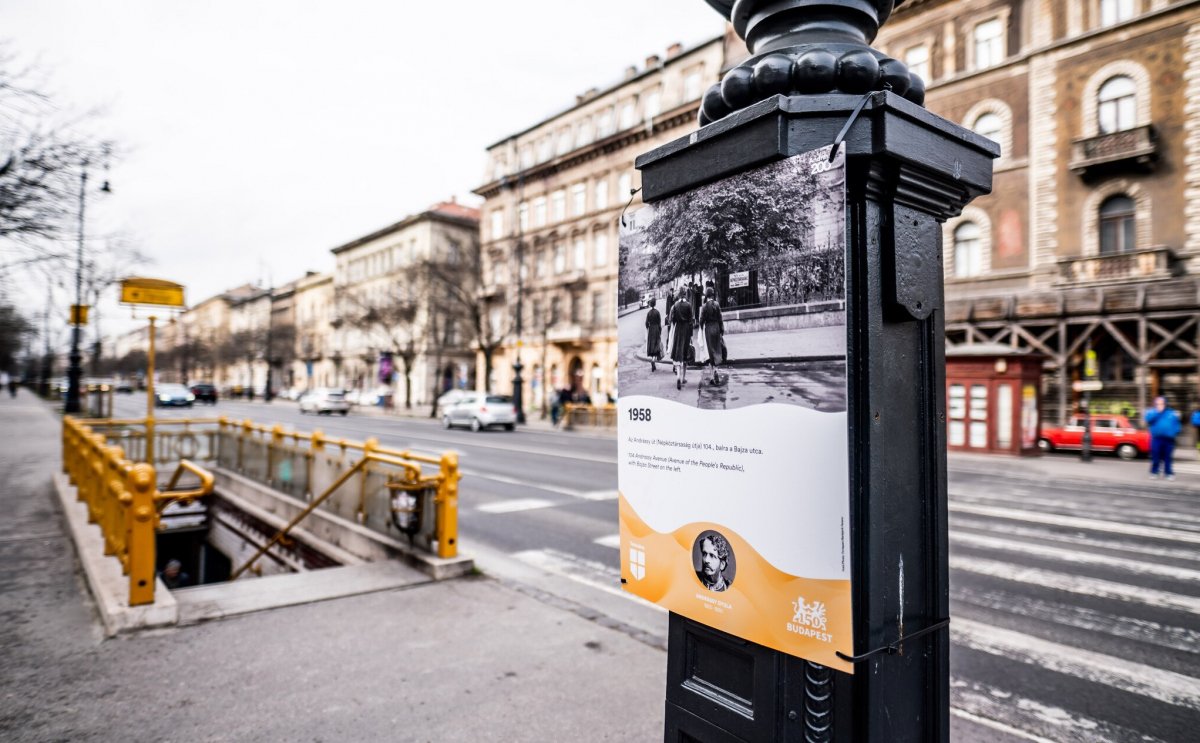 The „intertwined history” of the bridges and the city of Budapest
Which ideas and events have shaped the fate of bridges of Budapest and the cityscape? Alongside many other interesting facts, this question is also answered this newly published book by the Budapest City Archives, which introduces the history of bridges in Budapest.
The „intertwined history” of the bridges and the city of Budapest
Which ideas and events have shaped the fate of bridges of Budapest and the cityscape? Alongside many other interesting facts, this question is also answered this newly published book by the Budapest City Archives, which introduces the history of bridges in Budapest.
Oktogon
 Outdoor photo exhibition opened about the history of Andrássy Avenue
Outdoor photo exhibition opened about the history of Andrássy Avenue
March 6, 2023 at 7:30 PM
On the occasion of the 200th anniversary of the birth of Gyula Andrássy, an outdoor photo exhibition presenting the history of Andrássy Avenue can be seen from 6 March on Andrássy Avenue, between Oktogon and Kodály Körönd. The pictures, which were placed on the candelabras, show how traffic and the function of the road have changed. The photos also bring to life important historical moments.
Even the economic crisis could not stop construction – The first Neo-Renaissance houses on Andrássy Avenue
September 29, 2022 at 11:00 AM
Similar to the last few crisis-filled years, there were also economic difficulties in the past centuries, which also had an impact on the construction industry. Such was the crisis of 1873, which very sensitively affected the mega-investment of the era, the constructions along Andrássy Avenue. Fortunately, construction began here as early as 1872 - i.e., 150 years ago - and some residential houses were soon completed, setting a good example for further construction.
The birth of an iconic place - Oktogon is 150 years old, which was called Nyolcszög Square for decades
July 10, 2022 at 12:30 PM
We can safely call Oktogon Budapest's most unique transport hub: with its regular octagon shape, it quickly stands out on the map, and its easy-to-remember name means refreshment for foreigners, especially in Hungarian conditions. In addition, public transport routes famous throughout Europe intersect here: the continent's first underground railway, as well as the busiest tram lines. Its birth also coincides with the beginning of the golden age of the capital: its current form was defined 150 years ago, and for a long time it was called Nyolcszög Square.
Its construction has caused controversy, today it is one of the most elegant parts of the capital - the Andrássy Avenue
March 9, 2022 at 10:00 AM
One hundred and fifty years ago, on 9 March 1872, the contract was signed, with which the construction of the representative avenue of Pest, Andrássy Avenue, could actually begin. The design of the route strongly divided the public, with many seeing it as a luxury investment serving the needs of the aristocracy. Soon after its opening, it became clear that the result went beyond all gentlemanly whims: it was one of the most important urban development enterprises of the second half of the 19th century.
Once a miracle of the National Millennium it was covered by graffiti a hundred years later
September 14, 2020 at 9:00 AM
Built under only 20 months, the first of its kind on the continent and tried by the King. The Millennium Underground Railway, commonly known as the kisföldalatti "small underground" may be Budapest's most likeable means of public transport. It most recent major renovation was finished 25 years ago.
More articles
 The „intertwined history” of the bridges and the city of Budapest
Which ideas and events have shaped the fate of bridges of Budapest and the cityscape? Alongside many other interesting facts, this question is also answered this newly published book by the Budapest City Archives, which introduces the history of bridges in Budapest.
The „intertwined history” of the bridges and the city of Budapest
Which ideas and events have shaped the fate of bridges of Budapest and the cityscape? Alongside many other interesting facts, this question is also answered this newly published book by the Budapest City Archives, which introduces the history of bridges in Budapest.
 The Bridge Report, which brought a turning point in the history of Budapest
A travel report that changed the history of Pest and Buda, as well as Hungary. The little book contributed to the change of half a thousand years of legal customs and the implementation of an investment of unprecedented size and technical quality. This book was The Bridge Report [Hídjelentés in Hungarian].
The Bridge Report, which brought a turning point in the history of Budapest
A travel report that changed the history of Pest and Buda, as well as Hungary. The little book contributed to the change of half a thousand years of legal customs and the implementation of an investment of unprecedented size and technical quality. This book was The Bridge Report [Hídjelentés in Hungarian].
 Drama on the university wall - The heroic monument was planned 95 years ago
In the constant hustle and bustle of the Egyetem Square in Pest, the students may not even notice the monument that decorates the short section of wall between the church and the central building of ELTE. However, it commemorates their predecessors, the heroes who fought for their country in World War I, and those who heroically helped them. The first design of the dramatically collapsing soldier was born in 1928, ninety-five years ago.
Drama on the university wall - The heroic monument was planned 95 years ago
In the constant hustle and bustle of the Egyetem Square in Pest, the students may not even notice the monument that decorates the short section of wall between the church and the central building of ELTE. However, it commemorates their predecessors, the heroes who fought for their country in World War I, and those who heroically helped them. The first design of the dramatically collapsing soldier was born in 1928, ninety-five years ago.




